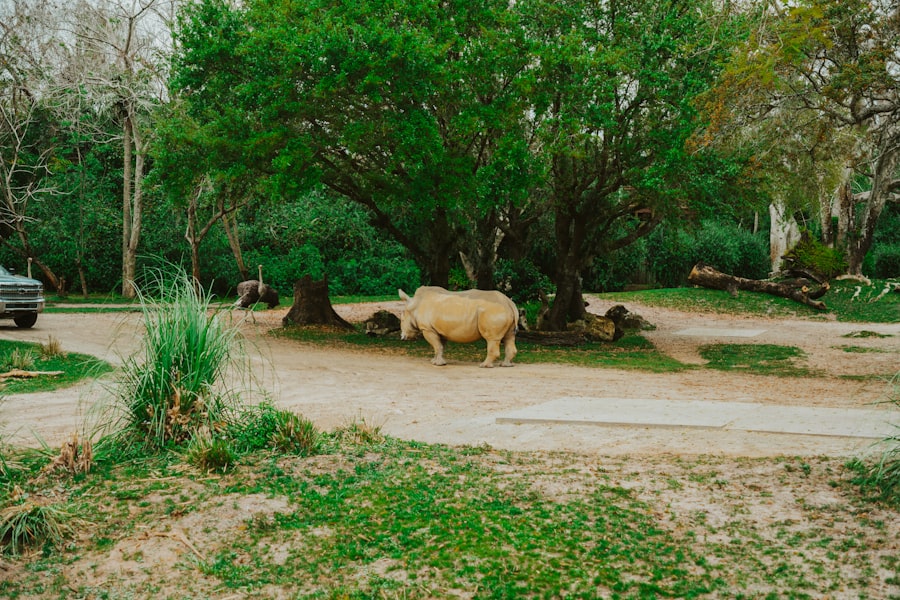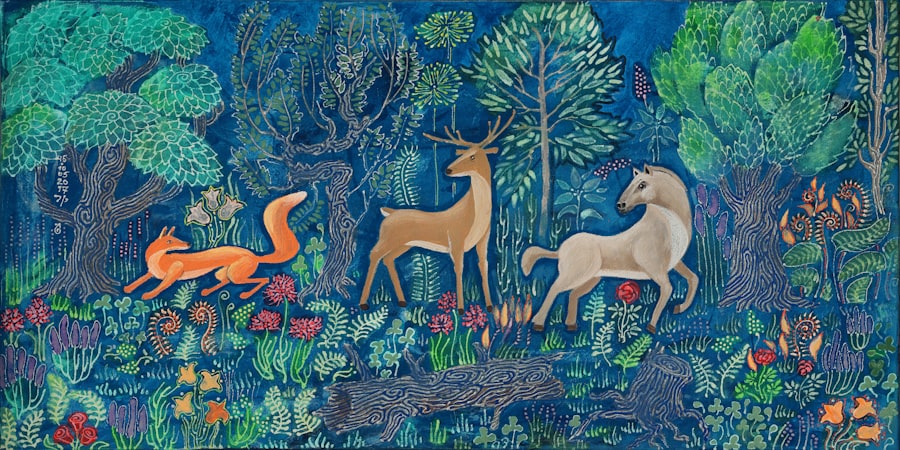The Drake Passage, a body of water that separates South America from Antarctica, is renowned not only for its treacherous waters but also for its rich and diverse wildlife. This unique marine environment serves as a critical habitat for a variety of species, making it a focal point for researchers and wildlife enthusiasts alike. The passage is often characterized by its unpredictable weather and turbulent seas, yet these very conditions contribute to the vibrant ecosystem that thrives beneath the surface and in the skies above.
As one of the most biologically productive marine areas in the world, the Drake Passage is home to an array of wildlife, including seabirds, marine mammals, and various fish species. The convergence of cold Antarctic waters with warmer currents creates a nutrient-rich environment that supports a complex food web. This article delves into the unique ecosystem of the Drake Passage, exploring its inhabitants and the conservation efforts aimed at preserving this remarkable region.
Key Takeaways
- Drake Passage is home to a diverse range of wildlife, including seabirds, marine mammals, penguins, albatrosses, and whales.
- The unique ecosystem of Drake Passage is characterized by its cold, nutrient-rich waters and strong winds, creating a prime environment for wildlife.
- Seabirds such as petrels and albatrosses are commonly found in Drake Passage, using the winds to glide effortlessly over the water in search of food.
- Marine mammals like seals and whales are frequently spotted in the waters of Drake Passage, attracted by the abundance of krill and fish.
- Penguins, including species like the chinstrap and gentoo, can be found nesting and foraging along the rocky shores and icebergs of Drake Passage.
The Unique Ecosystem of Drake Passage
The ecosystem of the Drake Passage is shaped by its geographical location and oceanographic conditions. The mixing of cold Antarctic waters with warmer sub-Antarctic currents results in a highly productive marine environment. Phytoplankton blooms flourish in these nutrient-rich waters, forming the foundation of the food chain.
These microscopic organisms are crucial for sustaining larger marine life, including krill, which serves as a primary food source for many species in the region. The dynamic nature of the Drake Passage also influences the migratory patterns of various animals. Many species travel through this area during their seasonal migrations, taking advantage of the abundant food resources available.
The passage acts as a corridor for wildlife, connecting different ecosystems and allowing for genetic exchange among populations. This interconnectedness highlights the importance of the Drake Passage not only as a habitat but also as a vital link in the broader marine ecosystem.
Seabirds of Drake Passage

Seabirds are among the most iconic inhabitants of the Drake Passage, with their graceful flight patterns and remarkable adaptations to life at sea. The region is home to a diverse array of seabird species, including petrels, shearwaters, and albatrosses. These birds are well adapted to the harsh conditions of the open ocean, often traveling vast distances in search of food.
Their ability to glide on ocean winds allows them to cover large areas with minimal energy expenditure. One of the most notable seabirds found in the Drake Passage is the Wandering Albatross, known for its impressive wingspan that can reach up to 12 feet. This magnificent bird spends most of its life in flight, only returning to land to breed.
The presence of such remarkable species underscores the ecological significance of the Drake Passage as a breeding ground and feeding area for seabirds. Observing these birds in their natural habitat offers a glimpse into their fascinating behaviors and adaptations.
Marine Mammals in Drake Passage
| Species | Population | Threats |
|---|---|---|
| Humpback Whale | Unknown | Climate change, entanglement in fishing gear |
| Antarctic Fur Seal | Approximately 3 million | Overfishing, habitat degradation |
| Leopard Seal | Unknown | Climate change, human disturbance |
The waters of the Drake Passage are also home to a variety of marine mammals, including seals and dolphins. These creatures play an essential role in maintaining the health of the marine ecosystem. For instance, seals are often seen lounging on ice floes or swimming gracefully through the water, while dolphins can be spotted riding the bow waves of boats.
Their presence indicates a thriving marine environment rich in prey. Among the marine mammals that frequent the Drake Passage, the Antarctic fur seal stands out due to its remarkable adaptability to extreme conditions. These seals are known for their playful behavior and social structures, often seen in large colonies during breeding season.
The diversity of marine mammals in this region highlights the ecological complexity of the Drake Passage and emphasizes the need for ongoing research and conservation efforts to protect these species and their habitats.
Penguins in Drake Passage
Penguins are perhaps the most beloved residents of the Drake Passage, captivating visitors with their charming waddles and social behaviors. Several species inhabit this region, including the Gentoo, Chinstrap, and Adélie penguins. These flightless birds are well adapted to life in cold waters, using their streamlined bodies to navigate through icy seas with ease.
The breeding colonies of penguins along the coasts of nearby islands provide an excellent opportunity for wildlife watchers to observe their fascinating behaviors. During breeding season, these colonies become bustling hubs of activity as penguins engage in courtship displays, nest building, and chick rearing. The sight of thousands of penguins gathered together is a testament to the thriving wildlife that calls the Drake Passage home.
Albatrosses and Petrels in Drake Passage

Albatrosses and petrels are two groups of seabirds that are particularly abundant in the Drake Passage. These birds are known for their exceptional flying abilities and long-distance migrations. Albatrosses, with their enormous wingspans, can glide effortlessly over vast stretches of ocean, covering thousands of miles without flapping their wings.
The presence of these birds is indicative of a healthy marine ecosystem, as they rely on abundant food sources such as fish and squid. Observing albatrosses and petrels in their natural habitat provides valuable insights into their feeding habits and migratory patterns.
Their graceful flight and unique behaviors make them a favorite among birdwatchers and nature enthusiasts exploring the Drake Passage.
Whales of Drake Passage
The waters of the Drake Passage are also frequented by several species of whales, making it an exciting destination for whale watching.
These magnificent creatures migrate through the passage during certain times of the year, drawn by the rich feeding grounds that support their dietary needs.
Humpback whales are particularly known for their acrobatic displays, often breaching and slapping their tails against the water’s surface. Orcas, or killer whales, are social animals that travel in pods and exhibit complex hunting strategies. The sighting of these majestic mammals is a highlight for many visitors to the Drake Passage, offering an unforgettable experience that underscores the importance of protecting their habitats.
Fish and Invertebrates in Drake Passage
Beneath the surface of the Drake Passage lies a diverse community of fish and invertebrates that contribute to the overall health of this unique ecosystem. Species such as Antarctic toothfish and various types of krill play crucial roles in maintaining the food web. Krill, in particular, is a keystone species that serves as a primary food source for many larger animals, including whales, seals, and seabirds.
Invertebrates such as sea spiders and various types of jellyfish also inhabit these waters, adding to the biodiversity of the region. The presence of such a wide range of species highlights the ecological significance of the Drake Passage as a vital habitat for marine life. Understanding these organisms’ roles within the ecosystem is essential for effective conservation efforts aimed at preserving this unique environment.
Conservation Efforts in Drake Passage
Given its ecological importance, conservation efforts in the Drake Passage have become increasingly vital in recent years. Various organizations and governments have recognized the need to protect this fragile ecosystem from threats such as climate change, overfishing, and pollution. Initiatives aimed at establishing marine protected areas (MPAs) have gained momentum as a means to safeguard critical habitats and ensure sustainable practices.
Research plays a crucial role in informing conservation strategies within the Drake Passage. Scientists study various aspects of marine life and environmental changes to better understand how human activities impact this delicate ecosystem. By gathering data on species populations and habitat health, researchers can advocate for policies that promote conservation and sustainable use of resources in this region.
Best Ways to Spot Wildlife in Drake Passage
For those eager to experience the wildlife of the Drake Passage firsthand, there are several effective ways to enhance wildlife spotting opportunities. One popular method is joining guided tours or cruises specifically designed for wildlife observation. These excursions often provide knowledgeable guides who can share insights about local species and their behaviors while ensuring responsible viewing practices.
Timing is also crucial when it comes to spotting wildlife in this region. Different species have specific migratory patterns or breeding seasons that dictate when they are most visible. Planning trips during peak seasons can significantly increase chances of encountering various animals, from seabirds soaring overhead to whales breaching in the distance.
Tips for Responsible Wildlife Watching in Drake Passage
Engaging in responsible wildlife watching is essential for minimizing human impact on delicate ecosystems like those found in the Drake Passage. Visitors should adhere to guidelines that promote ethical viewing practices while ensuring both their safety and that of wildlife. Maintaining a respectful distance from animals is crucial; approaching too closely can cause stress or disrupt natural behaviors.
Additionally, travelers should be mindful of their environmental footprint by minimizing waste and avoiding single-use plastics during excursions. Supporting eco-friendly tour operators that prioritize conservation efforts can also contribute positively to preserving this unique habitat. By practicing responsible wildlife watching, individuals can enjoy unforgettable experiences while helping protect the incredible biodiversity found within the Drake Passage.
In conclusion, the wildlife of the Drake Passage represents a remarkable intersection of diverse species and ecosystems shaped by unique environmental conditions. From seabirds soaring above to marine mammals gliding through icy waters, this region offers unparalleled opportunities for exploration and discovery. As awareness grows regarding conservation needs, it becomes increasingly important for individuals to engage responsibly with this extraordinary environment while fostering appreciation for its natural wonders.
The Drake Passage, a turbulent stretch of water between the southern tip of South America and Antarctica, is home to a diverse array of wildlife, including seabirds, whales, and seals. For those interested in exploring more about the unique ecosystems and the animals that inhabit this region, a related article can be found on MyGeoQuest. This article delves into the fascinating biodiversity of the Drake Passage and offers insights into the challenges these animals face in such a harsh environment. To learn more, you can visit the article by clicking on this link.
WATCH NOW! Drake Passage: Earth’s Deadliest Waters Revealed
FAQs
What animals can be found in the Drake Passage?
The Drake Passage is home to a variety of marine animals, including whales, seals, penguins, and seabirds. Some of the species commonly spotted in the area include humpback whales, orcas, leopard seals, and various species of penguins such as the chinstrap, gentoo, and Adélie penguins.
Why is the Drake Passage a rich habitat for marine animals?
The Drake Passage is a rich habitat for marine animals due to its nutrient-rich waters and the convergence of different ocean currents. These factors create an abundance of food sources, making it an ideal environment for a diverse range of marine species.
Are there any endangered species in the Drake Passage?
Yes, some of the animals in the Drake Passage, such as the humpback whale and the leopard seal, are considered to be threatened or endangered. Conservation efforts are in place to protect these species and their habitats in the region.
What role do animals in the Drake Passage play in the ecosystem?
Animals in the Drake Passage play a crucial role in the ecosystem as they contribute to the food web and help maintain the balance of marine life in the region. For example, penguins and seals are important predators, while whales are key in redistributing nutrients through their feeding and migration patterns.
Can visitors observe animals in the Drake Passage?
Yes, visitors to the Drake Passage can observe the diverse marine wildlife through organized expeditions and cruises. These trips offer opportunities to see whales, seals, penguins, and seabirds in their natural habitat, providing a unique and educational experience for wildlife enthusiasts.
